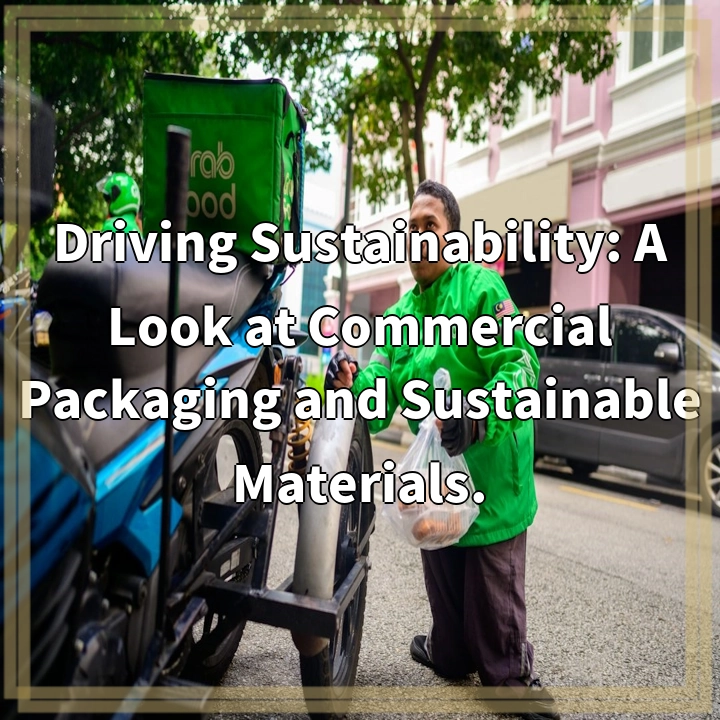
What it is:
Driving Sustainability: A Look at Commercial Packaging and Sustainable Materials
Commercial packaging is an essential component of many industries, serving as a protective layer for products and a means of conveying information and branding. However, traditional packaging materials often contribute to significant environmental degradation, including the depletion of natural resources, pollution, and waste generation. In response to these challenges, the concept of sustainable packaging has emerged as a way to mitigate the environmental impacts associated with commercial packaging.
Sustainable packaging refers to the use of materials and design strategies that minimize negative ecological effects while maintaining the functionality and appeal of the packaging. This approach takes into account the entire lifecycle of the packaging, from sourcing and manufacturing to distribution, use, and disposal. It aims to reduce resource consumption, minimize waste generation, and promote the use of renewable or recyclable materials.
Real-world problems associated with commercial packaging and unsustainable materials are numerous and significant. The first and most prominent issue is the excessive use of non-renewable resources, such as fossil fuels and virgin forests, in the production of packaging materials. This leads to high carbon emissions, deforestation, and loss of biodiversity.
Another problem is the extensive generation of plastic waste. Non-biodegradable plastic packaging items, such as bottles, bags, and food containers, contribute to the ever-growing global plastic pollution crisis. These items often end up in landfills or are improperly disposed of, leading to pollution of terrestrial and marine ecosystems.
In addition to resource depletion and waste generation, commercial packaging also poses challenges in terms of energy consumption during production and transportation. The manufacturing processes for packaging materials can be energy-intensive, contributing to greenhouse gas emissions and climate change. The transportation of packaging materials and finished products also requires significant fuel consumption, further exacerbating carbon emissions and environmental impact.
This blog will dive deeper into these real-world problems associated with commercial packaging and unsustainable materials. It will explore the environmental consequences, societal impacts, and economic considerations that drive the urgency to transition towards sustainable materials in commercial packaging. Through case studies and examples, we will highlight innovative approaches and success stories in the adoption of sustainable packaging practices, shedding light on the potential solutions that can drive sustainability in the packaging industry.

Solutions:
1. Material Innovation and Substitution:
The development and usage of sustainable materials, such as bioplastics, compostable materials, and recycled packaging, offer a solution to reduce dependence on non-renewable resources and minimize waste generation. These materials can be sourced from renewable feedstocks or post-consumer waste, reducing environmental impacts.
2. Design for Recycling and Circular Economy:
Implementing packaging designs that prioritize recyclability and enable efficient recycling processes can help close the loop in product life cycles. By designing packaging that is easily separable and compatible with existing recycling systems, materials can be kept in circulation and minimize waste sent to landfills or incineration.
3. Extended Producer Responsibility:
Implementing policies and regulations that hold manufacturers responsible for the entire lifecycle of their packaging can incentivize the adoption of sustainable practices. Extended producer responsibility programs can encourage the use of eco-friendly materials, promote waste reduction, and improve end-of-life management, ultimately reducing the environmental impact of packaging.
4. Collaboration and Partnerships:
Collaboration between stakeholders throughout the supply chain, including manufacturers, retailers, consumers, and waste management organizations, is crucial for driving sustainability in commercial packaging. Partnerships can foster knowledge sharing, innovation, and the development of scalable solutions that can catalyze the transition to sustainable packaging.
5. Consumer Education and Behavior Change:
Raising awareness among consumers about the environmental impacts of packaging and the importance of sustainable choices can drive demand for sustainable packaging options. Educating consumers about proper recycling practices and encouraging behavior changes, such as choosing products with minimal packaging or opting for refillable options, can contribute to reducing waste and promoting sustainability.















